| |
 
MYSTERY TOMBS
AT LISS
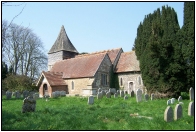 |
|
Hidden away behind
the picturesque cottages in Church Street
at West Liss lies the little church of
St. Peter. It was the parish church
before the railway came and the new
village grew up around the station and
the new church of St. Mary was built. It dates from the late 13th
century, and hard against the south wall
of the chancel, half hidden in the grass,
lie some very old flat tombstones, at two
of them appearing to bear the remains of
a Cross.
|
According to
Mrs Bashford’s booklet, All About Lyss,
published in 1922, and repeated in several
subsequent publications, they mark the graves of
crusaders, or Knights Templar.
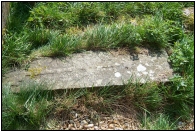 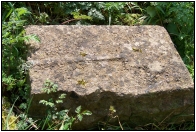
Further
evidence apparently bears out this fact. The
village inn is called The Spread Eagle, which was
the device used by the Emperors of the East, and
another local inn is actually named The Temple.
Furthermore, it is known that the Knights
Templars held the Manor at Temple Sotherington,
now known simply as Temple, near Blackmoor.
Who, then, were
the Knights Templar? They were a monastic
order of knights founded in 1113 A.D. to
protect pilgrims along the route from
Europe to the Holy Land at the time of
the Crusades. They took a vow of poverty,
which was rare among knights who had to
supply themselves with a horse, armour
and weapons. Indeed, their seal showed
two knights on one horse, an attempt to
show how poor they were, though it may
also allude to their duality as monks and
soldiers.
They adopted the white habit of the
Cistercians, emblazoning a red cross upon
it, and not withstanding the austerity of
monastic rule, recruits flocked to the
new order. Naturally, these humble
beginnings gradually changed, and the
Templars regularly transmitted money from
Europe to Palestine, gradually developing
an efficient banking system, and despite
their vows of poverty, they gradually
amassed great wealth through gifts from
grateful benefactors.
|
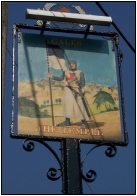 |
The order met
an ignominious end. The secrecy of its rites of
initiation had long caused suspicion on the part
of the church in Rome and the state in France,
and the Templars became the victim of monstrous
accusations of sacrilege. The order was wound up,
amid torture and execution, in 1312, yet some of
its ideals remain alive in freemasonry today.
So exactly who is it that lies under the stone
tombs at Liss? The outlines of the Cross could
easily be a sword, for Templar’s tombs
traditionally contained no words of
identification, just a trusty sword, in the shape
of a cross. There is a rectangular stone tomb in
London’s Temple Church bearing the
impression of a sword uncannily like one at Liss.
Yet Colin Dring,
Chairman of the Liss Area Historical
Society, is sceptical. Firstly, he says
the Spread Eagle is a relatively modern
name for the village inn, which was
formerly known as The Waggonners.
Similarly the Temple Inn at Liss Forest
dates only from the mid-nineteenth
century. The name derives from its first
landlord, Solomon Hounsome, when it was
affectionately known as Solomon’s
Temple. And many mediaeval graves, he
rightly points out, bear the sign of the
Cross.
So the mystery remains. Pat White, the
Society’s Archivist, thinks that the
tombs, situated so close to the church
itself, may well mark the resting place
of mediaeval knights living in the
district, but says there is no real
evidence to suggest that they were ever
Crusaders..
|
|
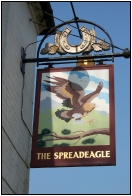 |
Tom Muckley, June 2005
This article was originally
published by the
Petersfield Post
tommuckley.co.uk
|
|






